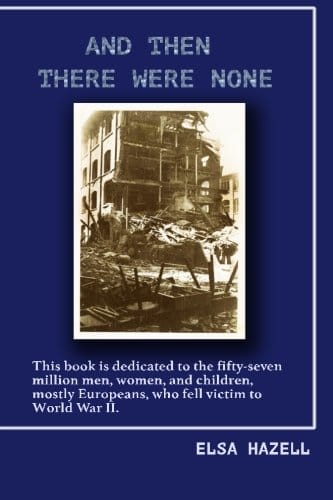Unraveling Agatha Christie’s “And Then There Were None”
Explore Agatha Christie's “And Then There Were None” in our 800-word deep dive covering plot, characters, themes, adaptations and why it still grips readers today.

Introduction to a Masterpiece of Mystery
Agatha Christie’s “And Then There Were None” is frequently cited as the best-selling crime novel of all time, and for good reason. First published in 1939, the book reinvented the locked-room puzzle by isolating ten strangers on a remote Devon island where a chilling nursery rhyme foretells their deaths. What follows is a relentless whodunit that has captivated readers for more than eight decades. In this article we will explore the plot, characters, themes, structure and enduring legacy of Christie’s most daring work, while explaining why it remains essential reading for modern audiences.
Plot Summary Without Spoilers
The novel opens with ten seemingly unconnected individuals receiving mysterious invitations to visit Soldier Island, a recently purchased estate just off the English coast. Their host, one “U. N. Owen,” never appears. Instead, a gramophone recording accuses each guest of a secret crime. That same night, one of them drops dead, and the prophetic rhyme “Ten Little Soldiers” is discovered framed on the wall. With every subsequent verse another character meets an eerie, rhyme-matching demise, and the survivors realize the killer must be one of them. Stripped of outside contact by a violent storm, paranoia spreads as alliances form and unravel, leading to a finale that is as logically satisfying as it is psychologically unsettling.
Christie’s Ingenious Character Ensemble
Christie assembles a cross-section of early-20th-century British society, from the stuffy judge Justice Wargrave to the self-righteous spinster Emily Brent, the opportunistic mercenary Philip Lombard, and the guilt-haunted governess Vera Claythorne. Each character arrives with public respectability masking private culpability. Rather than develop them through lengthy backstory, Christie reveals defining traits through dialogue, small gestures, and the tense reactions that follow each accusation. This economical method keeps the pace brisk while encouraging readers to weigh every word for hidden meaning. Ultimately, the diversity of personalities intensifies the mystery because it is never clear which façade might conceal a murderous intent.
Major Themes: Guilt, Justice & Moral Relativism
The Inescapability of Guilt
All ten guests believe they have eluded legal consequences, yet they cannot outrun their own consciences. The killer’s elaborate scheme forces each victim to confront suppressed memories, demonstrating that mental torment can be as punishing as legal sentencing. Christie suggests that guilt, once internalized, corrodes the psyche until it demands acknowledgment.
Vigilante Justice vs. Legal Justice
“And Then There Were None” challenges the reliability of institutional justice. Some guests were never prosecuted because their crimes were technically beyond legal reach, while others exploited loopholes or social privilege. The island becomes an extrajudicial courtroom where a self-appointed executioner carries out sentence. This raises the unsettling question: is perfect justice achievable only outside the law, or is such vigilantism inherently monstrous?
The Fragility of Civilization
Christie strips away the veneer of polite society to reveal raw survival instincts. When telephones stop working and boats fail to arrive, social hierarchies crumble. The speed of this breakdown suggests that civilization is a delicate construct, easily dismantled by fear and suspicion.
Narrative Structure and Literary Techniques
The novel employs a cunning third-person limited perspective, hopping between characters so that readers know exactly what the current viewpoint character knows—no more, no less. Christie also uses the nursery rhyme as a structural backbone, foreshadowing each death while inviting readers to anticipate twists. Short chapters and cliff-hanger endings make the book impossible to set aside, pioneering a pacing style that thrillers still imitate today.
Cultural Impact and Adaptations
Since 1939 “And Then There Were None” has sold over 100 million copies worldwide and been translated into more than 50 languages. The story has been adapted for stage, radio, film, television and even video games. Notable screen versions include René Clair’s atmospheric 1945 film, the star-studded 1974 adaptation set in Iran, and the BBC’s 2015 miniseries praised for its darker, more faithful tone. Each adaptation tweaks the ending—some opt for a Hollywood resolution—yet the core tension of isolation and mistrust remains intact. The novel’s influence can also be felt in contemporary media from the “Saw” franchise to reality-TV elimination formats, all of which borrow Christie’s “one by one” suspense template.
Why the Novel Resonates With Modern Readers
Despite its pre-World-War-II setting, the book’s exploration of moral accountability feels timeless. In an age of social media and true-crime podcasts, society remains fascinated by hidden misdeeds and public reckonings. The closed-circle mystery structure also provides a refreshing counterweight to sprawling genre epics: everything you need to solve the puzzle is on the page, challenging readers to engage actively rather than passively consume.
Furthermore, the absence of a traditional detective positions the audience as the only impartial investigator. Readers sift through motives, track the rhyme, and test theories, experiencing a uniquely interactive suspense that foreshadows today’s interactive entertainment.
Reading Tips for First-Time Sleuths
1. Pay close attention to every verbal slip or physical tic; Christie’s clues are always fair.
2. Keep the “Ten Little Soldiers” rhyme handy to spot upcoming parallels.
3. Do not dismiss any character as too obvious or too likable—everyone on Soldier Island has something to hide.
4. Accept that Christie may mislead with red herrings; reevaluate your suspect list after each death.
Conclusion: A Blueprint for Modern Mystery
More than eighty years after its debut, “And Then There Were None” remains a touchstone in crime fiction, offering a near-perfect fusion of airtight plotting, thematic depth and narrative economy. Whether you approach it as a thrilling weekend read or as a text for literary analysis, the novel rewards attention with an unforgettable meditation on guilt, justice and human nature. For aficionados of mystery, suspense or classic literature, this is one island visit that should not be missed.



